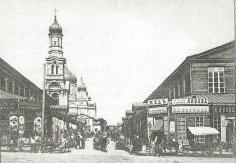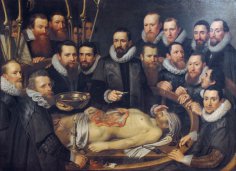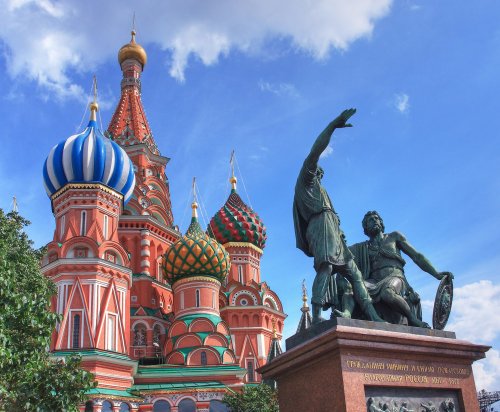
Rostov-on-Don has historically been one of the most crime-ridden cities in Russia. Odessa has always been close on its heels. Detectives have encountered all kinds of crime in Rostov, mostly thefts of various kinds. Of course, there were plenty of murders, stabbings, and other crimes, but Rostov and Odessa once set records for the number of thefts and various scams. Rostov-on-Don was nicknamed “Papa,” and Odessa “Mama.” Why? A brief historical analysis is essential. This article will focus on Rostov-on-Don.
For over a hundred years, pickpockets and extortionists of all stripes were rampant in Rostov. Even post offices and other government offices in the 19th and early 20th centuries posted warnings to keep an eye on your belongings, lest you lose them before you know it. Finding someone's wallet on the street, a decent and naive citizen would immediately come under pressure from the owner who had appeared, and would barely manage to buy his way out of going to the police. Of course, no one would take him to the police. These pranksters, Petya and Vasya, were known to every police station like the back of their hand, but the citizen who had fallen for the bait had no idea.
Naive people were constantly being sold stolen goods, counterfeit jewelry disguised as genuine, at bargain prices. It was common practice to sell a cheap item to a buyer, only to find the owner standing before them, indignantly demanding the property back, claiming it had been stolen just yesterday. The poor man hands it over and turns to collect his money… from whom? The sellers are nowhere to be found.
Such deals most often took place in markets, where there's constant bustle, crowds, noise, and din. Finding or catching anyone there is impossible, especially those for whom it's a familiar habitat. The bandits wore red sashes, cloth belts with a chain from a Finnish knife peeking out from underneath. Getting involved with them is dangerous to your health, and sometimes even life-threatening. And it was especially reckless to walk around Rostov at night.
The criminal underworld dwelled in the city's slums, operating primarily in the city center, around the Central Market, where the busiest trade took place, and the port was just nearby. A large amount of money was circulated in the central part of the city. Shops, stalls, a market, a hotel, and so on—this was where Rostov-on-Don's life was at its most vibrant at that time.
The most notorious criminal notoriety was attached to Bogatyanovsky Spusk (today Kirovsky Prospekt), where drinking establishments, brothels, and slums were concentrated. There wasn't a single law-abiding citizen here, only representatives of a dangerous criminal community. The buildings and dives were built in such a way that, in the event of a raid, they could easily hide in the numerous labyrinthine alleys and hidden passages.
The trade in feminine charms also flourished in Rostov. A girl who came to Rostov to work had to be very careful in finding a place for herself. Once, through inexperience, she fell into the hands of various pimps under the benevolent guise of “respectable employers,” there was no turning back.
Many different tales and stories have been preserved about the life of the Rostov-on-Don gangster community. Once, for example, a Rostov resident bought his own samovar for cheap at a flea market. What's more, he brought it to a completely empty house. And when he left, everything in the house was in its place.
A store could be robbed in broad daylight, simply by digging an underground passage. Goods were stolen from apartments in the few minutes it took the unwary owner to run out after “some noise on the street.” It was said that nothing was impossible for Rostov thieves.
In 1918, the “robbery of the century” occurred. One morning after the Christmas holidays, employees of the First Mutual Credit Society arrived at work to find their safe pried open and an underground tunnel dug. What they also found missing were tens of millions of rubles in full-weight gold. 435 depositors suffered, and the crime was never solved.
The name Rostov-Papa is associated with several such tales and stories. The thieves themselves probably can't give a precise explanation for why and when the southern city was given this nickname. Therefore, I'll share a few opinions.
Rostov-on-Don was a port city, like Odessa. Its vibrant trade and healthy turnover attracted those seeking easy money. The concentration of criminals of all stripes in this wealthy city gave rise to its name. Hospitable Rostov, like a “good father,” welcomed everyone, giving everyone a place under the Rostov sun. And it didn't matter who—merchant, artisan, or criminal. So who was to blame for the fact that there were more thieves?
According to another version, on one strange, overcast day in 1932, leaden clouds drifted so low over the city that they seemed to touch the domes of the Central Cathedral, located right on the Central Market, a favorite hangout for crooks and thieves. Someone waited for the opportune moment and “suddenly” screamed hysterically:
– The bell tower is falling!
Looking up at the sky, people saw an unusual natural phenomenon. A simple optical illusion terrified both residents and visitors. Panicked, they thought the domes were about to collapse on them. Everyone abandoned their shops and stalls and ran. The bandits had no choice but to quickly (and they were masters at it) snatch up all the valuables abandoned by their owners and scurry back into their holes before the police arrived.
This creative approach to the mass robbery of honest merchants (!) surprised the seasoned, seasoned Rostov detectives. Not long before these events, a meticulously planned bank robbery allegedly took place in Odessa, which also baffled the authorities there. Thus, the popular term “a married couple with common interests” was born: Rostov-Papa and Odessa-Mama.
Philologist and historian Alexander Sidorov believes that Rostov and Odessa got their names from the “vagabonds.” At that time, being a vagabond was fashionable in the criminal underworld; it conferred a special status. When an arrested thief was asked about his origins and place of residence, the traditional answer was “Mom – Odessa, dad – Rostov.” Rostov and Odessa, both rapidly developing commercial and industrial cities, and also ports, became home to numerous crooks and thieves, two unofficial capitals of the criminal underworld.
Or perhaps the Rostov and Odessa gangsters themselves couldn't agree on who was the most criminal? It's well known that their standards of morality and pride are quite different from those of decent society. Rostov and Odessa thieves have argued more than once about who's the toughest. Which city is the most criminal? They got tired of arguing and split the title between the two—the father and mother, just as parents wouldn't share.
However, all the versions and opinions share one key point: everything revolves around the criminal underworld, one way or another. Of course, we can't help but mention the gangsters themselves, at least the most famous ones, and the equally famous detectives.
The “Medic and Reika Gang,” whose leaders, Vanka the Medic and Andrey Matveyev, were known for their exceptional brutality in committing crimes, primarily robberies. The Turenko gang, the Pashka the Pharaoh gang, the infamous “Black Mask”—the prototype for the even more famous “Black Cat” from the legendary, now popular, TV series “The Meeting Place Cannot Be Changed”—and many other criminal organizations.
As cunning, clever, and dangerous as the Rostov bandits were, they weren't just kids. Ivan Khudozhnev headed the Rostov criminal investigation department for several years, personally participating in dangerous operations. He (and his associates) were responsible for dozens of successful crimes and the capture of criminal groups. Grigory Myshansky, Khudozhnev's ally, and Nikolai Machulin, the head of the secret Don militia department, were shot dead by bandits in front of his family. There were many, too many to list. True experts, selflessly risking their lives, sometimes died to rid Rostov-on-Don of bandits and ensure a peaceful, safe life for the city's residents.
In 2010, Rostov-on-Don even developed a tour route through the criminal Rostov of yesteryear. Specifically, tourists were offered a glimpse of the house on Stanislavsky Street where the “Black Mask” met, as well as other places with the infamous criminal reputation of Rostov-on-Don.
Rostov port
Rostov railway station
Rostov Bazaar
Bank
The city center. That very cathedral.





